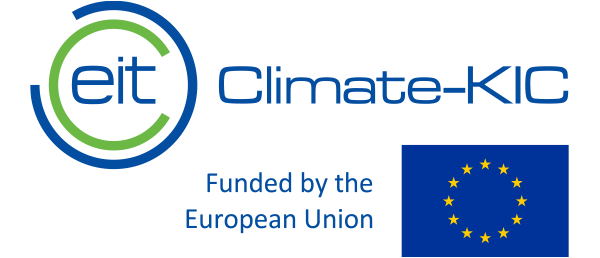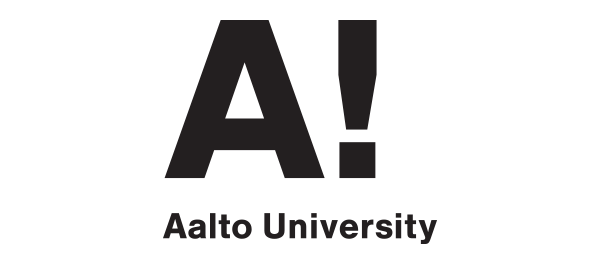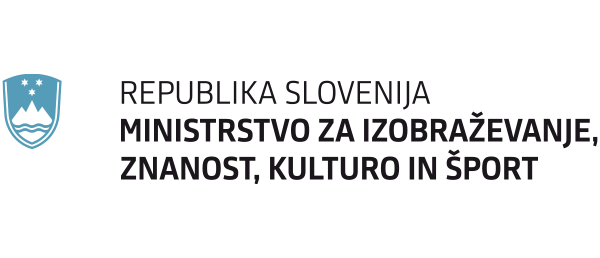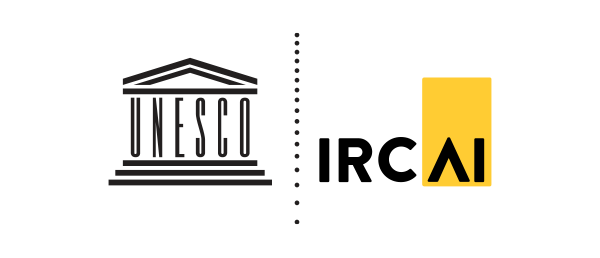
winner
Fighting bullying through immersive experiences with VR and ICT
What's the concept?
We make kids empathize with children being excluded. VR makes it possible to change perspectives!
You think that's all? By far not.
Adding to the VR experience, we designed an app, inspiring each kid to reflect on their experiences, call them to action & making real change happen.

Team: Empathy Network
Team members
We are a mixed team of students from Berlin, studying educational sciences at Freie Universtiät Berlin (Sinja Hantschmann), and digital economics at the Berliner Hochschule für Technik (Anke Krestel, Celina Breuer, Quynh Lan Nguyen, Léonie Smettons, Berkay Cihan, Leon Julius Aschenbach, Max Remien, Michel Rieckhoff, Finnegan Tidwell, Julian Heitzer, Vanessa Schmidt, Maria Aydin, Bao-Thy Shayla Nguyen). We take a special interest in the development of new technologies and the opportunities they bring for the future, mixed with a specific focus on learning and education. We believe that new technologies will bring fundamental change to the field of education, and thereby great opportunities. With the right tools, we can make a meaningful impact to enhance school experiences for every child, therefore fostering learning and development. By producing this app against bullying, we want to contribute to an inclusive school environment, enriching and empowering each child to strive for their best future possible.Contact details
Solution description
What is your final product/service/tool/activity?
The concept consists of two main building blocks:
- a VR experience in the first step:
The VR experience is supposed to take place in a school setting/ project work of a class.
The pupils are parted into smaller groups and have the VR experience then (a short film in which they experience some light form of mobbing/ exclusion, about 5-15 minutes). - an app supporting transfer of the experience to daily life
Before the VR experience, the app will give some hints and prepare the students before entering the VR experience. They need to know that they are allowed to interrupt and stop at any time they want and are warned about the content they are about to see.
After the VR experience, all students come together in small groups to talk about what they experienced. The discussion will be guided by the app too.
The app is not made for one-time use but will work as a transfer tool for a certain period (TBD). From time to time it will send thought-provoking messages, reflecting questions or calls to action to the student, so that the experience is kept alive and transferred to action. Furthermore, it will frame the experience rather positively: as the pupil evolves to be a “helping buddy” for those who need his help when they are being bullied. The experience is not supposed to be a punishment, but to give the student the feeling that he/she is making an impact by standing up against bullying.
How could the solution be used to enhance digital education in your challenge area?
Even though there have been a few experiments on the impact of VR on empathy until now there is no such concept as using VR in schools to foster emotional competencies and perspective change. Furthermore, emotional and social learning come up short most of the time in schools, even though they are basic for the healthy development of children and adolescents. The combination with the transfer tool (app) is special, too, because this is not a short-sighted one-time experience then. It does have the chance to make a long-term impact on empathy for victims of bullying, and also to motivate kids to stand up against bullies.
How could the success of the solution be measured?
→ questionnaires/ qualitative interviews for all stakeholders (e.g. parents, teachers, headmasters, school social workers/ school psychologists/ daycare after school, students,...)
→ by headmasters: rates of bullying incidents at schools, teacher's opinions,...
→ by teachers: evaluating social behavior of pupils
→ by the pupils themselves in the app by quantitative and qualitative analysis of their answers and interactions
How will the solution provide benefits to the challenge owner?
Bullying is a complex challenge. It is for the kids being bullied, often for the bullies themselves (but this is another difficulty which causes we aren’t tackling in this case directly), for the classes and schools in which bullying takes place and all adults involved. By this new approach, awareness for the topic should be raised, mostly for the kids. We hope that on one hand, kids are less likely to bully after understanding how hurtful it is, and also to motivate kids to go in between in case they see someone being bullied.
Also we are trying to frame bullying as something really not cool, while it is cool and great to take action and interrupt bulliers. Therefore we use that language and word fields in the app (motivating, rewarding, positive language.) It’s supposed to be fun and feel good to use the app, not as a punishment in which case it wouldn’t be impactful anyways.
Solution context
What problem are you facing?
We face the problem of bullying or systematic social exclusion in general. Bullying and systematic social exclusion are a problem not only in school but in everyday life as well. With the spread of online communication, it has become ever stealthier and more anonymous.
Already from a young age onwards pupils are experiencing, engaging in, or tolerating this behavior of their peer groups. These humans grow up with either having experienced traumatizing events themselves or causing mental distress to others without understanding their impact. Eventually, this can lead to a normalization of bullying behavior that grows to affect every age group.
This is where we want to intervene by ...
→ raising awareness of the topic.
→ empower and encourage children to stand up when bullying takes place.
→ make a point that bullying is not something that you can just let happen.
What challenge(s) are you solving?
Bullying is a complex challenge. It is for the kids being bullied, oftentimes for the bullies themselves (but this is another difficulty which causes we aren’t tackling in this case directly), for the classes and schools in which bullying takes place and for all adults involved. By this new approach, awareness for the topic should be raised, mostly for the kids. We hope that on one hand, kids are less likely to bully after understanding how hurtful it is, and also to motivate kids to go in between in case they see someone being bullied.
Also, we are trying to frame bullying as something very negative, while it is cool and great to take action and interrupt bullies. Therefore, we use the language and word fields in the app (motivating, rewarding, positive language.) It’s supposed to be fun and feels good to use the app, not as a punishment in which case it wouldn’t be impactful anyways.
Solution target group
(School classes of) kids 11-14 yrs.
In this context, it is very important that the teacher is aware and sensitized about the topic - in case there is a bad case of bullying in the class, the victim might not wanna be part of the experience. The app is thought of as a preventional tool and usage in acute cases would have to be developed further.
This is the target group we picked for our prototype. Still we believe that the concept would be useful for more age groups in social contexts if adapted. We know that bullying takes place in almost every social environment, so it would be useful to expand the concept on one hand, but also differentiate it further (as for example research shows bullying might differ between boys and girls), so this would be another approach to work on.
Solution impact
Our solution aspires to the prevention and ending of mobbing in schools. The children should be preventively educated on the beginning of mobbing and how serious this topic is. By using VR, the children get to experience bullying and become acquainted with it. Therefore, the positive behavior inside of the group or class is getting promoted and the individuals are starting to reflect on their behavior. Furthermore, the children are getting encouraged to be more self-conscious but also sensitive and more emphatic. In addition to that, the students' conflict behavior is getting improved.
Our central impacts are:
→ the exploitation of sensibility and mindfulness
→ promotion of social responsibilities but also strategies for handling violence
→ promoting responsibility and moral courage
To measure the impact, teachers can make use of evaluation sheets to figure out whether the student’s behavior has changed or not. The students themselves can use the provided app to analyze their quantitative/qualitative answers and interactions.
Solution tweet text
We want to tackle bullying by raising empathy and awareness. How? By using the opportunities of VR and ICT. By change of perspective, reflected behavior, shared thoughts, and questioned attitudes. For a society in which every child feels welcome and gets the chance to strive.Solution innovativeness
What makes your solution different and original?
With VR, the training is carried out in a protected area or "room" so that the pupils are not exposed to any dangerous situation. However, they are experiencing a bullying situation as immersive and closely as possible. The pupils have conveyed the feeling of being bullied, marginalized, and harassed. Based on our solution, the pupils get to know how to bully more intensively and directly, which is intended to help them to perceive and avoid bullying situations. They feel what it feels like to be treated maliciously by someone. Through realistic training, pupils get to know such situations best and can empathize with them.
Furthermore, the combination of the immersive experience with an app, accompanying the long-term consolidation of the content and perspective change is entirely new.
Can anything similar be found on the market?
A few apps are dealing with the topic of bullying or cyber mobbing in general, but the target group is the victims mostly. They show up ways to deal with bullying, which is when harm is already done.
We want to intervene earlier and prevent bullying in general, at the latest moment it's taking place.
This means, there is nothing comparable on the market yet, mostly not with such a thought-through didactic framework and exhaustion of what technologies make possible now.
Solution transferability
Bullying is by far not the only problem we are facing nowadays and therefore our solution of making use of a VR experience to evolve more empathy could be transferred to multiple other forms of discrimination or hate. For example, it could also be used to demonstrate racism or sexism following the same principle. This could also take place in a school project and be supported by the same app. The app, of course, needs to be extended in terms of the considered topic.
Furthermore, other age groups or social groups could be considered and problems like sexism at the workplace, etc. are targeted.
Solution sustainability
The aim is to realize a perspective change and teach pupils about the consequences of bullying. They learn what bullying is when bullying starts and the feeling of being bullied. Through this, the pupils learn to treat each other with respect and not to bully anyone because of their looks, religion, skin color… At the same time, they learn to talk about their feelings and problems. They learn to support each other and to stick together as a team and stand up for the value of supporting an open-minded society.
We believe that one-time interventions are sometimes forgotten too fast, so we developed the app which is going to lead through several tasks, calls to action, food for thought, and so the topic gets anchored deeply and led in front of the user's eyes again and again.
Because of that, we rate the sustainability of our product very high and believe that it really could make an impact on the cognitive and emotional development of children. Furthermore, we think there is quite a chance our app would have the power to change children's attitudes towards each other and their behavior.
Solution team work
Anke& Sinja were responsible for the main conceptualization and organization.
The rest of the team did an amazing job supporting the project, taking responsibility for several tasks from developing the VR script to doing background research, drafting the submission texts, giving feedback on the tools and elaborating them.
Some of us could definitely imagine working on this project together in the future, since we believe that it really would have an impact. Furthermore it is an approach for a problem which we desperatley need to find a solution for.
We are aware that bullying is a complex topic and there is still evaluation needed, but we think this might be an approach to tackle this problem in cooperation with teachers and schools.
* Climate-KIC publishes the proposed solutions developed during the DigiEduHack event solely for the purposes of facilitating public access to the information concerning ideas and shall not be liable regarding any intellectual property or other rights that might be claimed to pertain to the implementation or use any of the proposed solutions shared on its website neither does it represent that it has made any effort to identify any such rights. Climate-KIC cannot guarantee that the text of the proposed solution is an exact reproduction of the proposed solution. This database is general in character and where you want to use and develop a proposed solution further, this is permitted provided that you acknowledge the source and the team which worked on the solution by using the team’s name indicated on the website.









